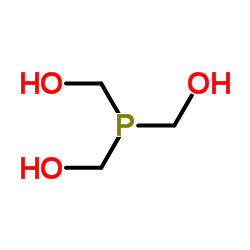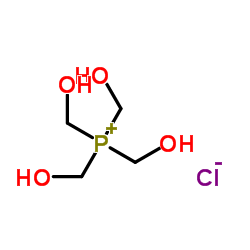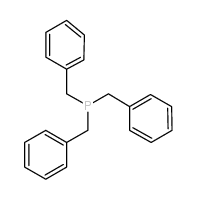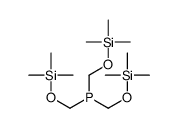2767-80-8
| Name | bis(hydroxymethyl)phosphanylmethanol |
|---|---|
| Synonyms |
Phosphinidynetrimethanol
Tris(hydroxymethyl)phosphine Trimethylolphosphine Phosphinetriyltrimethanol phosphanetriyltrimethanol EINECS 220-445-6 Tris-hydroxymethyl-phosphine MFCD00055382 Methanol, 1,1',1''-phosphinidynetris- Methanol,phosphinidynetris Phosphinidynetrismethanol |
| Density | 1.137 (estimate) |
|---|---|
| Boiling Point | 311.7±37.0 °C at 760 mmHg |
| Melting Point | 48-56ºC(lit.) |
| Molecular Formula | C3H9O3P |
| Molecular Weight | 124.076 |
| Flash Point | 142.3±26.5 °C |
| Exact Mass | 124.028931 |
| PSA | 74.28000 |
| LogP | 0.02 |
| Appearance | Powder, Crystals or Chunks | White to pale yellow |
| Vapour Pressure | 0.0±1.5 mmHg at 25°C |
| Storage condition | 2-8°C |
Synonym: Section 2 - COMPOSITION, INFORMATION ON INGREDIENTS
Risk Phrases: 25 36/37/38 Section 3 - HAZARDS IDENTIFICATION EMERGENCY OVERVIEW
Toxic if swallowed. Irritating to eyes, respiratory system and skin. Potential Health Effects Eye: Causes eye irritation. Skin: Causes skin irritation. May be harmful if absorbed through the skin. Ingestion: May cause irritation of the digestive tract. Toxic if swallowed. Inhalation: Causes respiratory tract irritation. May be harmful if inhaled. Chronic: Not available. Section 4 - FIRST AID MEASURES Eyes: Flush eyes with plenty of water for at least 15 minutes, occasionally lifting the upper and lower eyelids. Get medical aid. Skin: Get medical aid. Flush skin with plenty of water for at least 15 minutes while removing contaminated clothing and shoes. Ingestion: Get medical aid immediately. Wash mouth out with water. Inhalation: Remove from exposure and move to fresh air immediately. If not breathing, give artificial respiration. If breathing is difficult, give oxygen. Get medical aid. Notes to Physician: Treat symptomatically and supportively. Section 5 - FIRE FIGHTING MEASURES General Information: As in any fire, wear a self-contained breathing apparatus in pressure-demand, MSHA/NIOSH (approved or equivalent), and full protective gear. Extinguishing Media: Use water spray, dry chemical, carbon dioxide, or chemical foam. Section 6 - ACCIDENTAL RELEASE MEASURES General Information: Use proper personal protective equipment as indicated in Section 8. Spills/Leaks: Vacuum or sweep up material and place into a suitable disposal container. Section 7 - HANDLING and STORAGE Handling: Avoid breathing dust, vapor, mist, or gas. Avoid contact with skin and eyes. Storage: Store in a cool, dry place. Store in a tightly closed container. Section 8 - EXPOSURE CONTROLS, PERSONAL PROTECTION Engineering Controls: Facilities storing or utilizing this material should be equipped with an eyewash facility and a safety shower. Use adequate ventilation to keep airborne concentrations low. Exposure Limits CAS# 2767-80-8: Personal Protective Equipment Eyes: Not available. Skin: Wear appropriate protective gloves to prevent skin exposure. Clothing: Wear appropriate protective clothing to prevent skin exposure. Respirators: Follow the OSHA respirator regulations found in 29 CFR 1910.134 or European Standard EN 149. Use a NIOSH/MSHA or European Standard EN 149 approved respirator if exposure limits are exceeded or if irritation or other symptoms are experienced. Section 9 - PHYSICAL AND CHEMICAL PROPERTIES Physical State: Solid Color: colorless Odor: Not available. pH: Not available. Vapor Pressure: Not available. Viscosity: Not available. Boiling Point: Not available. Freezing/Melting Point: Not available. Autoignition Temperature: Not available. Flash Point: Not available. Explosion Limits, lower: Not available. Explosion Limits, upper: Not available. Decomposition Temperature: Solubility in water: Insoluble. Specific Gravity/Density: Molecular Formula: C3H9O3P Molecular Weight: 124.08 Section 10 - STABILITY AND REACTIVITY Chemical Stability: Not available. Conditions to Avoid: Incompatible materials. Incompatibilities with Other Materials: Oxidizing agents, halogens, oxygen. Hazardous Decomposition Products: Carbon monoxide, oxides of phosphorus, carbon dioxide, formaldehyde. Hazardous Polymerization: Will not occur. Section 11 - TOXICOLOGICAL INFORMATION RTECS#: CAS# 2767-80-8: PC3502500 LD50/LC50: CAS# 2767-80-8: Draize test, rabbit, eye: 100 uL/24H Severe; Draize test, rabbit, skin: 500 uL/24H Severe; Oral, rat: LD50 = 178 mg/kg. Carcinogenicity: Tris(hydroxymethyl)phosphine - Not listed by ACGIH, IARC, or NTP. Other: See actual entry in RTECS for complete information. Section 12 - ECOLOGICAL INFORMATION Section 13 - DISPOSAL CONSIDERATIONS Dispose of in a manner consistent with federal, state, and local regulations. Section 14 - TRANSPORT INFORMATION IATA Shipping Name: TOXIC SOLID, ORGANIC, N.O.S.* Hazard Class: 6.1 UN Number: 2811 Packing Group: III IMO Shipping Name: TOXIC SOLID, ORGANIC, N.O.S. Hazard Class: 6.1 UN Number: 2811 Packing Group: III RID/ADR No information available. Section 15 - REGULATORY INFORMATION European/International Regulations European Labeling in Accordance with EC Directives Hazard Symbols: T Risk Phrases: R 25 Toxic if swallowed. R 36/37/38 Irritating to eyes, respiratory system and skin. Safety Phrases: S 26 In case of contact with eyes, rinse immediately with plenty of water and seek medical advice. S 37/39 Wear suitable gloves and eye/face protection. WGK (Water Danger/Protection) CAS# 2767-80-8: No information available. Canada CAS# 2767-80-8 is listed on Canada's DSL List. CAS# 2767-80-8 is not listed on Canada's Ingredient Disclosure List. US FEDERAL TSCA CAS# 2767-80-8 is listed on the TSCA inventory. SECTION 16 - ADDITIONAL INFORMATION N/A |
| Symbol |


GHS05, GHS06 |
|---|---|
| Signal Word | Danger |
| Hazard Statements | H301-H315-H318-H335 |
| Precautionary Statements | P261-P280-P301 + P310-P305 + P351 + P338 |
| Hazard Codes | T |
| Risk Phrases | 25 |
| Safety Phrases | S26;S45;S36/S37/S39 |
| RIDADR | UN 2811 6.1/PG 3 |
| WGK Germany | 3 |
| RTECS | PC3502500 |
| HS Code | 2905199090 |
|
~97% 
2767-80-8 |
| Literature: Cristau, Henri-Jean; Virieux, David; Mouchet, Patrick; Fruchier, Alain European Journal of Organic Chemistry, 1999 , # 7 p. 1561 - 1569 |
|
~0% 
2767-80-8 |
| Literature: Kisanga, Philip; Verkade, John Heteroatom Chemistry, 2001 , vol. 12, # 2 p. 114 - 117 |
|
~% 
2767-80-8 |
| Literature: Grinshtein,E.I. et al. J. Gen. Chem. USSR (Engl. Transl.), 1966 , vol. 36, # 2 p. 302 - 306,311 - 315 |
|
~% 
2767-80-8 |
| Literature: Volcko, E. J.; Verkade, J. G. Phosphorus and Sulfur and the Related Elements, 1984 , vol. 21, p. 111 - 118 |
| Precursor 2 | |
|---|---|
| DownStream 7 | |
| HS Code | 2905199090 |
|---|---|
| Summary | 2905199090. saturated monohydric alcohols. VAT:17.0%. Tax rebate rate:13.0%. . MFN tariff:5.5%. General tariff:30.0% |




![3,5,8-trioxa-1-phospha-4-arsabicyclo[2.2.2]octane structure](https://image.chemsrc.com/caspic/175/24647-30-1.png)


![Ethanamine,N,N',N''-[phosphinidynetris(methylene)]tris[N-ethyl- structure](https://image.chemsrc.com/caspic/124/16111-57-2.png)
